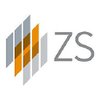Filter interviews by
Protiviti Manager Interview Questions and Answers
Protiviti Manager Interview Experiences
2 interviews found
I applied via Recruitment Consulltant
(5 Questions)
- Q1. Alteryx Fundamentals & Project Discussion.
- Q2. Macro's, Analytical Apps
- Q3. Parsing & Summarize tools
- Q4. In-data base tools details
- Q5. Fuzzy logic & Predictive modelling
(3 Questions)
- Q1. Power Bi Basics & Fundamentals
- Q2. Agile & scrum methodologies
- Q3. Project Management & Team leading experience
(2 Questions)
- Q1. Everything else irrelevant as per JD. The role requirement that has been shared to me by the consultancy Ubique systems was of "Alteryx Developer, 4-6 year with key skill of Alteryx". the company HR & recr...
- Q2. Very unprofessional company and culture
Interview Preparation Tips
(1 Question)
- Q1. For BPS (outsourcing services). They do not ask much questions as they dont know about AP or RTR. Whatever one can mention in his or her resume and if one can explain those properly...Hired.
Interview questions from similar companies

I applied via Naukri.com and was interviewed before Feb 2021. There were 3 interview rounds.

(2 Questions)
- Q1. Ind AS Knowledge of Ind AS 109, 107 & 32
- Ans.
Ind AS 109, 107 & 32 are accounting standards used in India.
Ind AS 109 deals with financial instruments and their classification, measurement, and impairment.
Ind AS 107 deals with disclosures related to financial instruments.
Ind AS 32 deals with financial instruments presentation.
These standards are used by companies in India to prepare their financial statements in accordance with the Indian Accounting Standards (Ind
- Q2. Financial Reporting based on IFRS 9 & IFRS 2
(3 Questions)
- Q1. What are your salary expectations?
- Q2. Why are you looking for a change?
- Q3. Tell me about yourself.
Interview Preparation Tips
- IFRS
- Ind AS

I applied via Naukri.com and was interviewed before Jan 2021. There were 4 interview rounds.
Interview Questionnaire
1 Question
- Q1. Tell me about yourself
Interview Preparation Tips

I applied via Referral and was interviewed before May 2021. There were 3 interview rounds.

(1 Question)
- Q1. Salary expectations, reason for change
(1 Question)
- Q1. Technical discussion related to candidate experience
Interview Preparation Tips

I applied via Referral and was interviewed before Jul 2020. There were 3 interview rounds.
Interview Questionnaire
2 Questions
- Q1. Latest developments in IDT
- Ans.
IDT has made significant progress in the development of CRISPR-based gene editing tools.
IDT has launched a new CRISPR enzyme called Alt-R Cas12a (Cpf1) that can target AT-rich regions of the genome.
IDT has also developed a new CRISPR-Cas9 system that allows for multiplexed gene editing.
IDT has expanded its portfolio of PrimeTime qPCR assays for gene expression analysis.
IDT has introduced a new line of xGen Lockdown Pan...
- Q2. Work experience related questions
Interview Preparation Tips

I applied via Referral
(2 Questions)
- Q1. Travel to location
- Q2. Salary discussion s
Interview Preparation Tips

I appeared for an interview in Jun 2020.
Interview Questionnaire
2 Questions
- Q1. About my previous entity experience
- Q2. I'm ready with my key tasks in previous entity
Interview Preparation Tips

I applied via Walk-in and was interviewed in Dec 2019. There was 1 interview round.
Interview Questionnaire
1 Question
- Q1. Interview details in short for PwC Sdc
Interview Preparation Tips

I applied via Indeed and was interviewed before Feb 2020. There were 5 interview rounds.
Interview Questionnaire
1 Question
- Q1. Very basics 2 questions related to the domain(Finance in my case). They are more interested in knowing about your internship experience and the kind of work you did with your previous employer.
Interview Preparation Tips
* Speak with confidence.
* Communicate well.
* Its the best practice to say No to something which you don't know, rather than beating around the bush and answering nonsense.
* Dress well, because of the first impression factor.
Protiviti Interview FAQs
Tell us how to improve this page.
Protiviti Interviews By Designations
- Protiviti Senior Consultant Interview Questions
- Protiviti Consultant Interview Questions
- Protiviti Accountant Interview Questions
- Protiviti Research Associate Interview Questions
- Protiviti Deputy Manager Interview Questions
- Protiviti Manager Interview Questions
- Protiviti Financial Analyst Interview Questions
- Protiviti Associate Consultant Interview Questions
- Show more
Interview Questions for Popular Designations
- Compliance Manager Interview Questions
- Retail Pharmacist Interview Questions
- Market Research Manager Interview Questions
- TPA Coordinator Interview Questions
- Financial Process Associate Interview Questions
- SAP SD end User Interview Questions
- Director of Operations Interview Questions
- Eectrical Mantinence Interview Questions
- Show more
Protiviti Manager Interview Process
based on 4 interviews
Interview experience
Manager Interview Questions from Similar Companies
Fast track your campus placements
Protiviti Manager Reviews and Ratings
based on 25 reviews
Rating in categories
|
Consultant
500
salaries
| ₹3 L/yr - ₹12.4 L/yr |
|
Senior Consultant
477
salaries
| ₹6.2 L/yr - ₹18 L/yr |
|
Deputy Manager
321
salaries
| ₹9.5 L/yr - ₹23 L/yr |
|
Manager
215
salaries
| ₹13 L/yr - ₹28.9 L/yr |
|
Consultant2
185
salaries
| ₹3.6 L/yr - ₹9.5 L/yr |

Deloitte

Ernst & Young

PwC

KPMG India
- Home >
- Interviews >
- Protiviti Interview Questions >
- Protiviti Manager Interview Questions




















